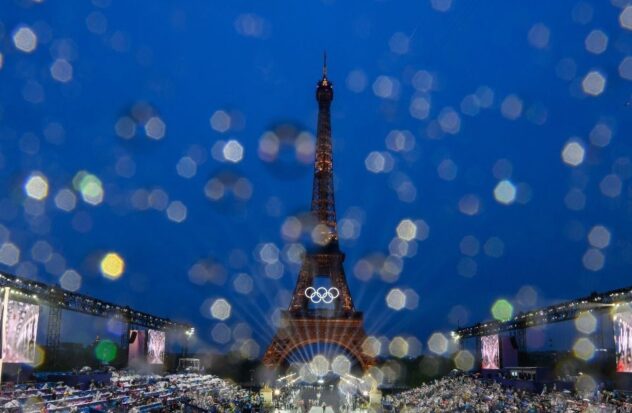PARIS.- From Louis XIV to the Minions, from the Miserables a Lupin: the ceremony of opening of the Paris 2024 Olympic Gamesriddled with references to culture, has painted a picture of a France proud of its diversity and rich in history.
Revolutionary France
The opening ceremony had multiple nods to the French Revolution, starting with its title. It will be fine! (It will come out well), a reference to the revolutionary chant Ah, it’ll be fine, it’ll be fine, it’ll be fine!which was covered by the metal band Gojira.
The organisers say they were inspired by the ceremony marking the bicentennial of the French Revolution on 14 July 1989. This took place between the Arc de Triomphe, lit up in pink for the occasion, and the Place de la Concorde, two and a half kilometres away. The African-American soprano Jessye Norman, wrapped in a blue, white and red flag, then sang the Marseillaise while standing in a martial stance at the foot of the obelisk.
Other periods of revolutionary Paris were also evoked during the ceremony, in particular the painting by Delacroix Freedom guiding the peoplewhich has just been restored, or The Miserables by Victor Hugo, his best-known work.
A different France
The world’s most listened-to francophone artist, 29-year-old Aya Nakamura, sang accompanied by dancers… and the Republican Guard, in a segment that paid homage to the fusion of genres.
The Franco-Malian singer sang verses from her two best-known songs Pookie y Djadja before interpreting For me Formidable by Charles Aznavour, one of the most internationally known French voices.
The performance was praised by President Macron in X with the comment: “en même temps” (at the same time); a slogan used during his first presidential campaign and which refers to the rapprochement of the two Frances, that of tradition and that of fusion.
Nakamura’s actions have, however, angered a section of the French far right.
The French colonial troops’ riflemen, who played an important role alongside the French army, particularly during the two World Wars, also illustrated diversity by appearing in the painting dedicated to urban sports.
A feminist France
At the height of the Pont Alexandre III, ten statues paid tribute to great female figures in the history of France, starting with Olympe de Gouges, a politician known for having drafted the Declaration of the Rights of Women and of the Citizen in 1791.
A top athlete in the interwar period, Alice Milliat organised the first Women’s World Games in 1922. Her commitment led to a greater presence of women at the Olympic Games.
The struggle for women’s rights, and in particular for access to voluntary termination of pregnancy and the legalisation of abortion, was highlighted by Gisèle Halimi, a lawyer and politician, and Simone Veil, a Minister of Health who fled from concentration camps.
The aim of the organisers is to ensure that these statues become permanent fixtures in the city’s landscape.
A France that exports itself
Among the great French audiovisual successes of recent years, the series Lupin o Los Minions made their appearance at the ceremony.
The character of Arsène Lupin arrived in one of the first scenes of the evening. The ‘gentleman thief’ has been in fashion since the Netflix series in which he is played by Omar Sy.
For their part, the yellow characters in the films My favorite villain Created by Pierre Coffin, they were shown stealing the Mona Lisa in a submarine, which ended up sinking, pierced by javelins. This fragment represented the great moment of French animation.
The adaptation of Victor Hugo’s work The Miserables As a musical comedy, it is another of France’s great cultural successes: the work has been translated into 25 languages, has been exported to 38 countries, especially to Broadway, and had a successful film adaptation in 2012.
France and its great leaders
With a touch of humour, urban disciplines and modern sports such as BMX, break-dancing and 3×3 basketball were used to commemorate great French leaders throughout the centuries.
Louis XIV, an absolute monarch who had the longest reign of any king of France (1643-1715), shared the spotlight on a BMX with Napoleon and General Charles de Gaulle, an emblematic figure of the French Resistance during World War II and then president between 1958 and 1969.
Source: AFP



